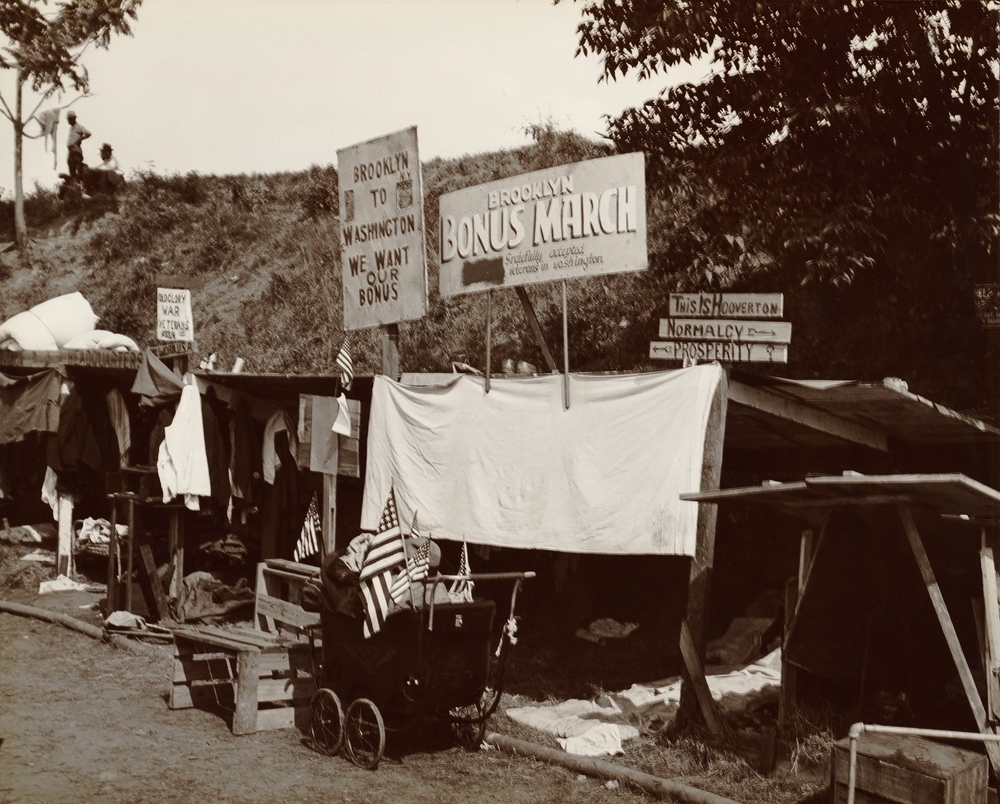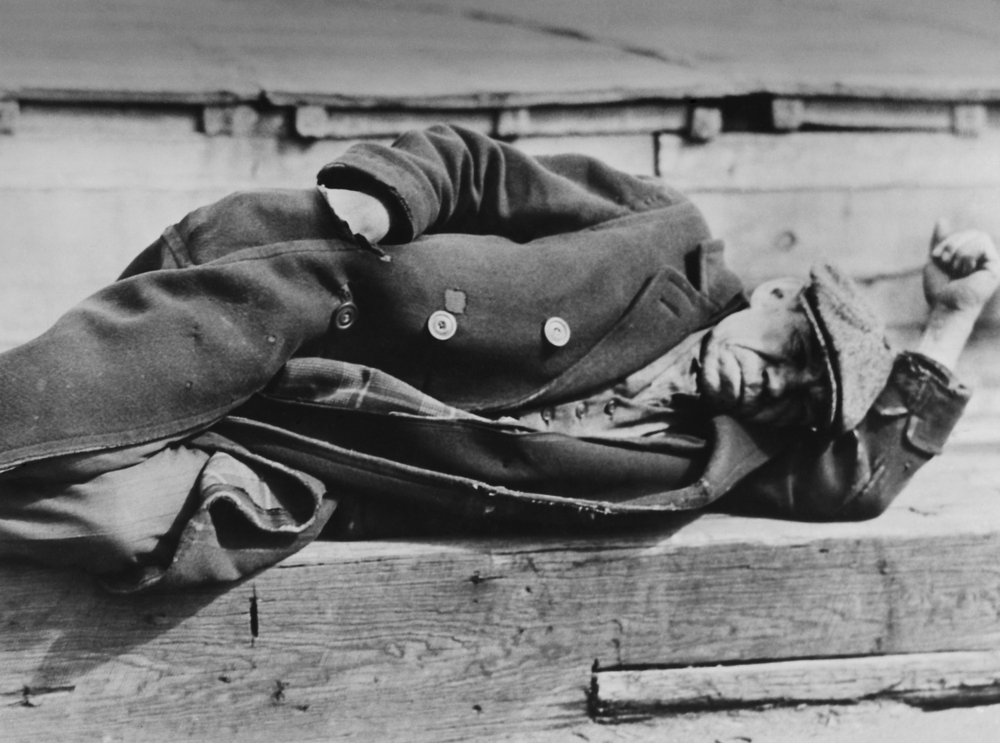The Great Depression is often overlooked when it comes to discussions about modern finances. After all, how could something that happened almost a century ago have any meaningful relevance to how we engage with the financial world today? As the British Prime Minister Winston Churchill once said, “Those that fail to learn from history are doomed to repeat it” and so it’s important to understand how the Great Depression changed personal finance.
A Brief Primer
Prior to the start of the Great Depression in October 1929, Americans had been riding a wave of optimism and the age of consumerism had truly arrived. After the tragedy of “The Great War” that would end all wars, people were more open to having fun and enjoying the social, cultural and technological changes that were underway. Radio was the latest in entertainment, everyone wanted a radio of their own and a trip to the movie theater with free AC during hot summer months was affordable. Automobiles became a common sight on newly constructed roads and refrigerators, washing machines and vacuum cleaners became available to ease the drudgery of home management.
To fund these changes, the banks engaged in pure speculation, workers were encouraged to sink their savings into stocks and loans were available for all. Risk became celebrated, an investor could borrow up to 90% of the purchase price of a stock and everyone could buy into the American dream. Taking out a loan to purchase a new automobile or the latest gadget was commonplace and most Americans had debt to manage.

This all came to a head in late 1929 when the stock market crashed, which triggered the most severe economic downturn in US history. Millions of Americans lost their entire life savings in an instant, banks failed, unemployment figures soared and the economy was damaged. The way that people thought about the future, security, money, savings, investing and how finances should work were reshaped almost overnight. The rules of personal finance were rewritten and new attitudes and habits had to be adopted. The fear of debt and the rise of government oversight affect how we spend, save and invest to this day.
What Were the Causes of the Great Depression?
From the introduction to this article, it’s all too easy to believe that the financial crash of 1929 was caused by sudden changes in American culture and habits. But, in reality, the seeds of this calamity were planted earlier in the decade with a mix of speculation that fueled economic exuberance, credit expansion and technological innovations. There were new industries taking hold in America, such as: aviation, automobiles and consumer appliances. The factory systems facilitated mass production, people wanted these new innovations for their lives, and the goods were accessible and affordable. Through the rise of newspaper and radio advertising Americans were encouraged to spend regularly and this was often on credit.
The banks were keen to lend to consumers, speculators and businesses. Although the new Federal Reserve kept the interest rates low, there was next to no regulation on risky banking practices. Heavy borrowing to buy stocks and margin buying became a widespread phenomenon.
Even a slight market decline could trigger panic selling and complete instability in the markets. The stock prices hit their peak in September 1929, investors were overextended, confidence was low and then selling began in earnest. On October 29, or “Black Thursday”, a frenzy of shares were traded and the market completely collapsed. Overnight, billions of dollars in wealth disappeared and that was only the beginning of the financial disaster.
After the crash, the fear continued to spread and those banks that had invested their depositors money in failing securities were faced with the real risk of insolvency. There was no federal deposit insurance and when the bank failed, the customer lost all their money.
From 1929 up until 1933, approximately 9,000 banks closed for good. Many small businesses lost any access to credit and they couldn’t continue to operate. The unemployment levels shot up to 25% and the US industrial output dropped by almost 50%! For most people, it must have seemed that modern life had simply ended and they were headed back into very dark times. As you can imagine, this trauma left an indelible impression on the psyche of those that lived through those times. The lesson was clear, speculation and access to easy credit could vanish quickly and financial behaviours would need to change.
What Was the Human Impact?
This degree of financial trauma had a dramatic effect on the financial stability of the US, but the statistics can only reveal so much. For numerous families, this experience led to a sudden loss in status that for some was impossible to deal with. People that had worked hard their entire lives found themselves standing in lines at soup kitchens. Every penny was stretched, children wore hand-me-downs that had been patched multiple times. Homelessness was rife, shantytowns which were nicknamed “Hoovervilles” sprang up at the edge of every major town and city. Across rural areas the crop prices fell, there were mass foreclosures and the dust bowl forced farmers off their land.

Those that survived these times had a deep fear of financial failure that didn’t fade over time. Even decades after, they would tell their children about the shame and sense of helplessness that they endured. As a result, an entire generation adopted frugality with zeal and any waste was a dangerous sign. The belief in credit and a stable financial future could not be assumed and a cautious approach to finances became internalized. Those that came of age during this time adopted an ethos of self-reliance, prudence and a deeper respect for financial security that they carried with them throughout their lives.
What Was the Inception of Modern Saving Habits?
Before the Great Depression, most Americans took prosperity for granted. It was relatively easy to get credit and incomes were on the rise. This encouraged people to spend or invest rather than save their money. These attitudes were reflected in the stock market which seemed to offer the chance to attain wealth with no need to develop reserves for hard times.
After the crash, this all changed, the trust in all financial institutions disappeared as the depositors money vanished. A culture of extreme financial caution was the inevitable outcome. Many people kept their savings hidden in coffee tins or their mattress and some even ventured into the woods to bury their cash and valuables! Other people adopted a different approach and shifted any money they had into tangible goods that can retain value, such as precious metals and farmland.
Depression-Era Habits That Still Work
| Depression-Era Principle | What It Meant Then | How to Apply It Now |
|---|---|---|
| “Use it up, wear it out…” | Families repurposed clothes, jars, and scraps | Prioritize repairing over replacing; cut waste |
| Cash over credit | Credit was rare and often seen as risky | Use debit and budgeting apps to track real spending |
| Zero-based budgeting | Every penny had a job – survival depended on it | Assign every dollar in your paycheck a purpose |
| Homegrown and homemade | Gardens and DIY were essential for food and supplies | Meal prep, cook at home, try low-cost hobbies |
| Emergency funds—out of necessity | People saved cash under mattresses for security | Build a 3–6 month emergency savings fund |
| Community sharing & bartering | Neighbors traded goods and services to get by | Swap skills or use local “Buy Nothing” groups |
| Frugal fun | Entertainment was free: cards, radio, storytelling | Choose low-cost fun: library books, hikes, potlucks |
| Avoid lifestyle inflation | Even small windfalls were saved, not spent | When income increases, boost savings—not spending |
This laid the foundation of what became the modern savings culture and for many families it became necessary as their route out of poverty. Even after the economy had improved, the survivors of the depression saved their money in this manner. The children were taught to pay themselves first, they learnt the value of a dollar and they would avoid credit and unnecessary purchases. The financial experts that came into the field at this time began to promote savings as financial security. This is the dominant mindset to this day for savvy investors and savers that want to plan for the future.
How Did People Become Less Debt Averse?
During the roaring 20s, credit was regarded as the engine of progress to buy appliances, cars, stocks and anything else a growing family needed. This was regarded as a prudent approach, but the entire system was built on a bed of sand and it couldn’t endure.
When income dries up, debts cannot be maintained and collateral value disappears. Those that borrowed heavily faced bankruptcy and foreclosure throughout the 1930s. There was profound social stigma and any credit that was available was deeply distrusted. During the following decade, most Americans would avoid a loan unless it was absolutely necessary, and cash was king.

Even in the post WW2 era, most credit had a bad reputation and banks and retailers had to reintroduce credit products slowly and carefully. Public trust had to be rebuilt, but the lesson that debt magnifies risk remained and this became a core principle for personal finances.
When Were Emergency Funds Adopted?
We don’t have a specific date for this, but it certainly became an enduring lesson for Great Depression survivors. People quickly learned that those with no financial buffer were more vulnerable to further financial hardships. This lesson came too late for many people, but others would adopt a “just in case” approach to savings.
Having access to emergency funds became the only way to get through a business closure or layoff at work. This became an ingrained habit years before the term “Emergency Fund” entered the vernacular and it’s an enduring mindset to this day. Sound financial planners recommend that 3-6 months of living expenses are kept in a relatively liquid account to overcome financial hardship.
When Did People Return to Investing?
In the aftermath of the Great Depression, there were numerous investors that had lost everything and they would never return to equities. For many decades, the majority only used savings accounts or government bonds. The market was considered to be too volatile and investing was regarded as a reckless endeavor.
To overcome hesitancy, the investment industry had to change and become more professional with government oversight. A new breed of financial advisors were trained to help investors navigate through the markets which had become more complex. Diversification to spread investments to mitigate risk became the default route for smart investors. The creation of the Securities and Exchange Commision and new regulatory frameworks was essential to build trust. The confidence in markets gradually returned, but investors had a greater respect for risk, they had to become more disciplined and casual investing was a thing of the past. We can still see this mindset today with an emphasis on planning and diversification in long-term financial planning.
How Did the Government Respond?
Policymakers were forced to deal with the economic reality that the markets could not guarantee financial stability in isolation. The Great Depression forced the federal government into an active role to safeguard personal financial security for the first time. In 1933 The Banking Act established the FDIC to guarantee bank deposits up to a set limit. This slowed the panic cycle of withdrawals and a measure of public trust in savings was restored. In the same year, The Securities Act and in the following year the Securities Exchange Act imposed fresh regulatory controls on Wall Street. The purpose was to improve transparency and reduce fraud.
The most dramatic legislation followed in 1935 with the Social Security Act which established a basic income for retirees and unemployment insurance. These programs provided people with a safety net as the economy was rebuilt up to pre-1929 levels leading up to WW2.
All of these reforms had a dramatic impact on how Americans dealt with their money and financial institutions. Self-reliance was still the core value, but government intervention had become a safeguard against instability and systemic risk. Finding a balance between personal financial responsibility and governmental collective protection became a feature of modern life that we still have to this day.
Are the Lessons Learned During the Great Depression Relevant Now?
Yes, although it’s almost a century since the start of the Great Depression, it still reverberates down to us through the intervening decades. Take a look at some of the modern financial crises that we’ve endured more recently. The financial collapse in 2008, when many families lost their homes and the Covid-19 pandemic are two great examples.
At these times, the instinct passed down to us kicked in and many people reverted to the formation of an emergency fund and savings. The advent of AI in recent years have brought these harsh realities into stark relief again. Many people are suddenly faced with unemployment and they need to fall back on scepticism, financial prudence and cost saving measures. Even though we may not be aware of it, the lessons learned during the Great Depression are embedded in our culture.

What are the Characteristics of Personal Finances?
In our modern world, we are blessed with technological advances, but economic uncertainty is still a real concern and personal finance has become an essential skill. How we manage our finances is based on time-tested principles. But, now we must deal with a digitally connected global economy which brings significant benefits and pitfalls to navigate. Let’s take a look at some of characteristics of modern personal finance in more detail.
Goal-Oriented Planning
Today, we place a strong emphasis on goals with clear objectives, such as: starting a business, building a college fund, buying a home and so on. We may use financial planning software, budgeting tools and AI to set actionable steps, timelines and to track our progress. This creates accountability and it can reduce the need for guesswork that can be a precursor to financial stress and uncertainty.
Security and Fraud Prevention
Digital access introduces risks, such as ID theft, scams, data breaches and more. To deal with these threats it’s vital to have strong passwords, account monitoring, two-factor authentication, credit freezing and other security measures in-place.
Access to Credit
The access to credit is more sophisticated now than at any other time in human history. In the past borrowing was restricted to select loans and mortgages. Now, credit access has expanded into a wide array of products to establish lines of credit, personal loans, car loans, credit cards and more.
If credit is used wisely, it can be an incredible tool to navigate through the financial world, but vigilance must be exercised to avoid high-interest debt at the end of each month.
Diversified Investment Planning
With modern tools, anyone can now invest and build a diversified portfolio using their smartphone. Investing in mutual funds, fractional shares and index-tracking ETFs is no longer reserved for the wealthy and their stockbrokers.
As a holdover from the Great Depression, diversification is now the established method to withstand volatility in the markets and mitigate risk. This approach is characterized by consistency, disciplined and long-term investing.
Automation and Behavior Tracking
The advent of AI driven tools and data collection have brought automation that can help an investor to be focused and more disciplined. Using automatic transfers, recurring investments, scheduled bill payments and other systems can reduce money management headaches.

Economists have found that small nudges and defaults can achieve dramatic outcomes for investors. For example, an employee is more likely to save for their retirement, if they are automatically enrolled in a savings plan. This may seem draconian, but some tools can overcome natural human tendencies to spend impulsively or procrastinate which can make a positive difference.
The Great Depression was a financial disaster, but it did promote some necessary changes regarding personal finances and the lessons learned are still relevant today. It’s still important to build an emergency fund to overcome financial problems. We should avoid excessive debt and save consistently. We must be cautious when we invest and use diversification to mitigate risk in our portfolio. If we implement these principles in our personal finances, we are better prepared for the future.








